Slow pitch softball captivates countless players around the globe, blending the excitement of competition with the joy of camaraderie. Among the vital roles in the game, the catcher stands out, as their strategic vantage point allows them to orchestrate the defense and control the game’s rhythm.
To excel as a slow pitch softball catcher, it’s crucial to grasp the fundamental skills, such as the correct stance, pitch reception, and framing. On top of that, efficient communication with fellow players and the capacity to make rapid judgments contribute to a triumphant performance.
Are you ready to enhance your abilities as a slow pitch softball catcher? This blog post will walk you through the indispensable tips and tactics to refine your prowess behind the plate. Gear up with your glove, and let’s embark on your journey to mastering the art of catching in slow pitch softball!
The Role of the Catcher in Slow Pitch Softball
The catcher is responsible for receiving pitches, preventing passed balls, and making crucial defensive plays. They must have a deep understanding of the game’s rules and strategies, as well as excellent communication skills to effectively work with the pitcher and other teammates.
Catcher’s Stance and Positioning
Stance
There are two primary stances catchers use:
- Primary Stance: Used when there are no runners on base, the catcher is in a more relaxed position, keeping the glove low and the body slightly upright.
- Secondary Stance: Used when runners are on base, this stance is more athletic, with the catcher squatting lower and keeping the glove in front of the body to prevent passed balls.
Positioning
- Behind the Plate: Catchers should be positioned close enough to the plate to receive the pitch comfortably but far enough back to avoid being hit by a foul tip or the batter’s swing.
Footwork: Proper footwork is essential for making quick, accurate throws to bases. Always keep feet shoulder-width apart and be ready to transfer weight from the back foot to the front foot when making a throw.
Rawlings Baseball/Slowpitch Softball Glove Series
- 12 1/2 INCH ADULT GLOVE | Perfect for recreational baseball and slowpitch softball
- BASKET WEB | Versatile web that can be used at any position on the field
- FULL GRAIN LEATHER | Quality material ensures enhanced durability
- ZERO SHOCK PALM PADDING | Provides increased impact protection while catching
- ADJUSTABLE WRIST STRAP | Allows for a customizable fit for maximum comfort
- GAME READY FEEL | With quick, easy 80% factory - 20% player break-in process
Catching Techniques and Tips
- Two-Hand Catch: Use both hands to catch the ball, with the glove hand providing a target and the throwing hand positioned behind the glove to secure the ball quickly.
- Soft Hands: Keep hands relaxed and “give” with the pitch to absorb the ball’s energy and avoid dropped catches.
- Keep Eyes on the Ball: Focus on the ball from the pitcher’s release until it’s securely in the glove.
Communication with the Pitcher
- Signaling Pitches: Use clear and concise hand signals to communicate pitch selection to the pitcher.
- Pitcher-Catcher Relationship: Develop a strong rapport with the pitcher to understand their strengths and weaknesses, and work together on pitch selection and strategy.
Blocking and Preventing Passed Balls
- Body Position: When blocking a ball, square up to the pitch, drop to the knees, and lean forward to cover as much of the plate as possible.
- Glove and Arm Position: Keep the glove between the legs and tuck the throwing arm alongside the body to prevent the ball from passing through.
- Chest Position: Arch the chest slightly outward to help deflect the ball downward and keep it in front of you.
Framing Pitches for Strikes
- Glove Position: Present the glove as the target and subtly move it to the strike zone after receiving the pitch.
- Quick Movements: Avoid exaggerated movements when framing to maintain the umpire’s trust.
- Timing: Frame the pitch at the moment it hits the glove, maintaining a smooth and consistent motion.
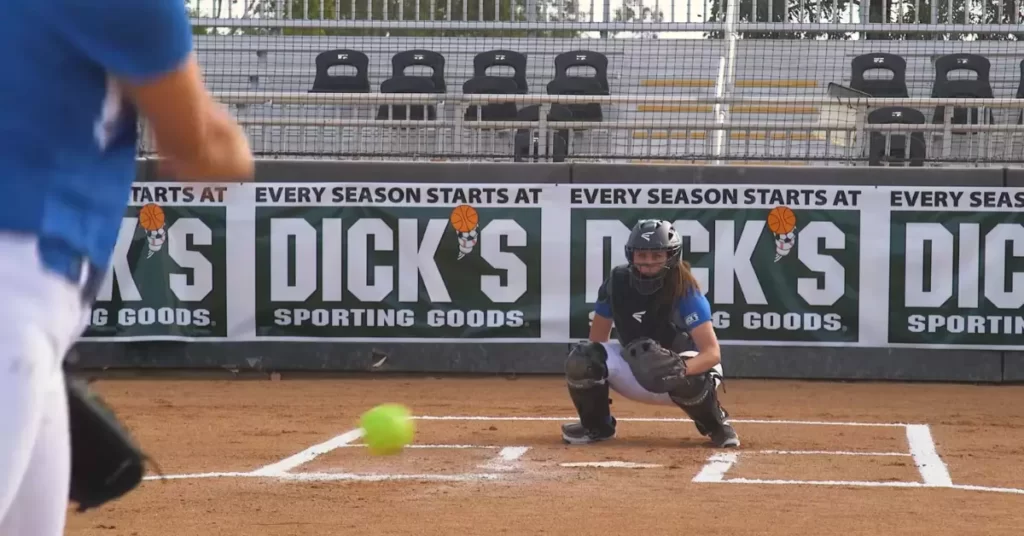
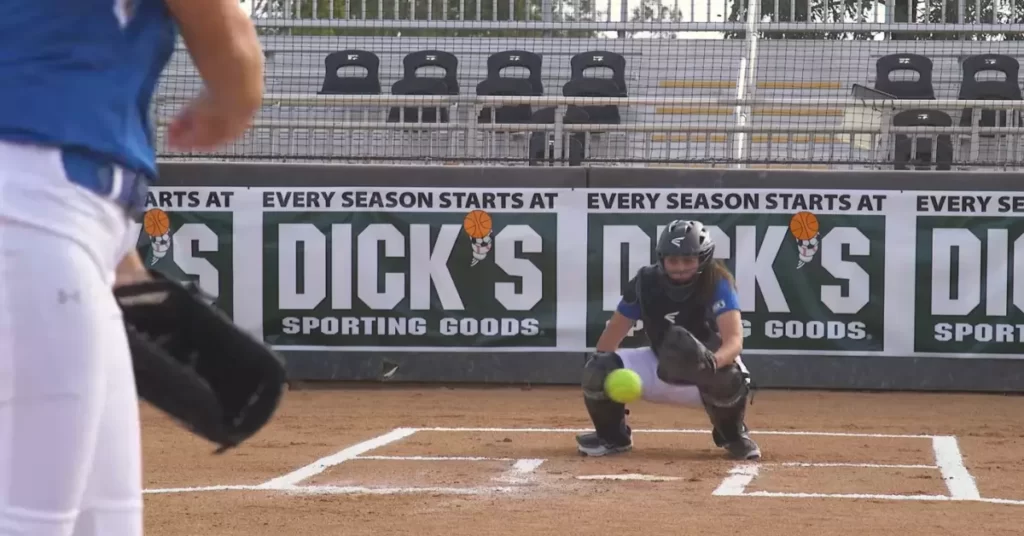
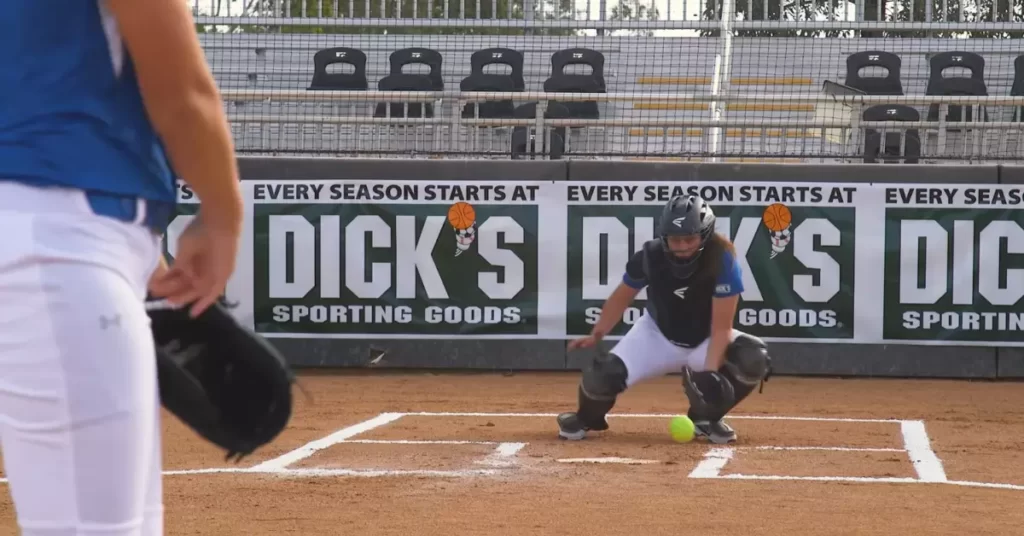
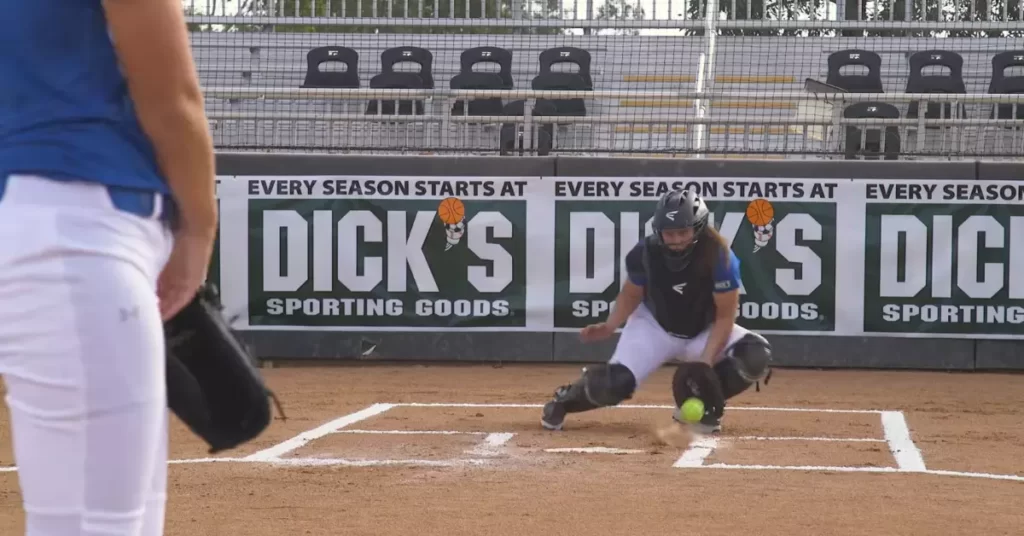
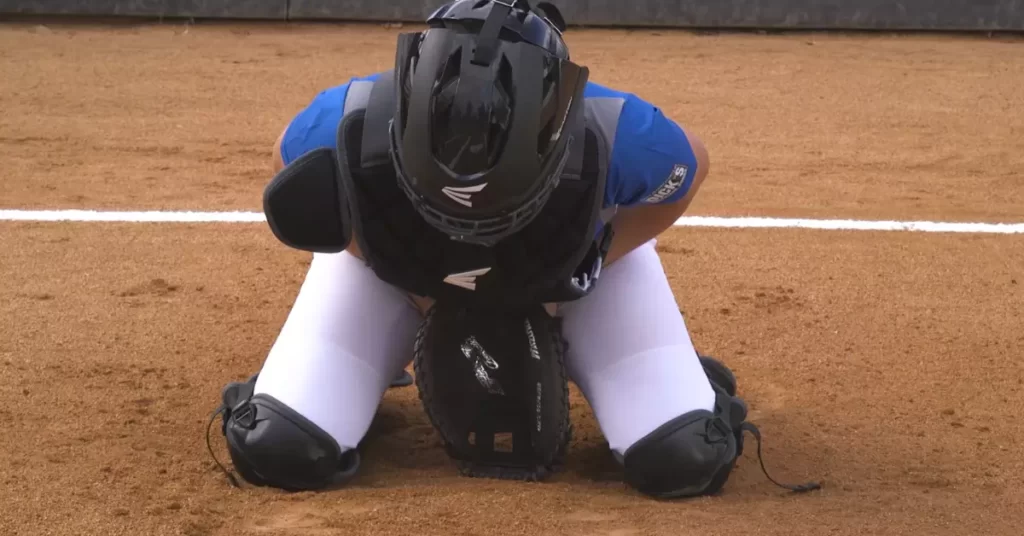
Throwing Out Base Runners
- Quick Release: Develop a fast release to throw out base runners by minimizing the time it takes to transfer the ball from the glove to the throwing hand.
- Footwork: Use proper footwork to generate power and accuracy, stepping toward the target with the front foot.
- Throwing Technique: Throw with a compact, over-the-top arm motion, and aim for the base’s center.
Fielding Bunts and Choppers
- Read the Play: Anticipate bunts and choppers by observing the batter’s stance and movements.
- Quick Reaction: React quickly to field the ball and make a throw to the appropriate base.
- Secure the Ball: Ensure a clean grip on the ball before making the throw to avoid errors.
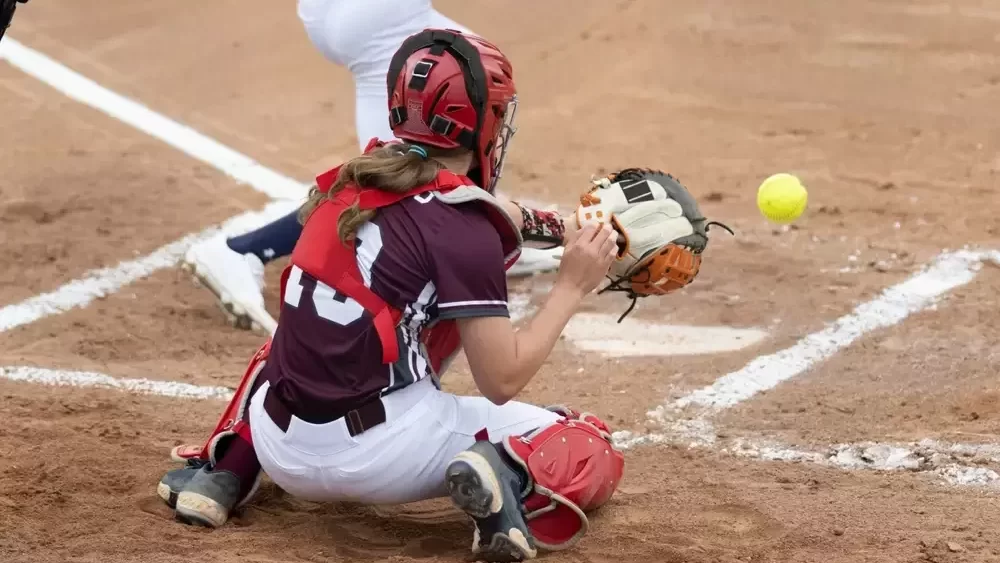
Equipment Tips for Catchers
- Helmet and Mask: Choose a helmet and mask combination that offers protection, comfort, and visibility.
- Chest Protector: Look for a chest protector that provides ample coverage and allows freedom of movement.
- Shin Guards: Select shin guards that fit securely and cover the entire lower leg.
- Catcher’s Mitt: Pick a mitt that feels comfortable and has sufficient padding to absorb the impact of pitches.
Building Physical and Mental Strength
- Physical Conditioning: Engage in regular strength and conditioning exercises to build the necessary endurance and power for the catcher position.
- Mental Toughness: Develop mental toughness through practice, visualization, and maintaining a positive attitude.
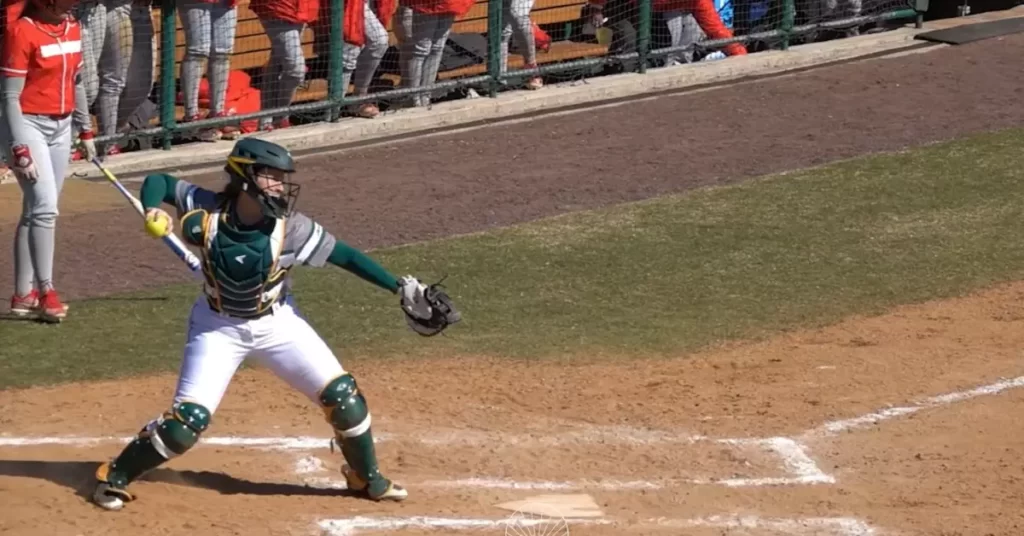
Frequently Asked Questions
What’s the difference between slow pitch and fast pitch softball catching?
In fast pitch softball, catchers are more focused on pitch framing, blocking, and throwing out base runners due to the faster pitch speeds and increased likelihood of stolen bases. In slow pitch, catchers prioritize receiving pitches cleanly, preventing passed balls, and fielding bunts and choppers.
How can I improve my throwing accuracy as a catcher?
Practice proper footwork, maintain a compact throwing motion, and aim for the center of the base during throws. Consistent practice will help improve accuracy over time.
Is it necessary to wear all the protective gear while playing catcher in slow pitch softball?
While the risk of injury may be lower in slow pitch softball, it’s still crucial to wear protective gear to ensure your safety during gameplay.
Final Thoughts
Being a catcher in slow pitch softball requires a unique blend of physical and mental skills. By mastering the techniques and strategies outlined in this guide, you’ll be well on your way to becoming an elite catcher.
Remember to communicate effectively with your teammates, practice regularly, and stay focused on the game. With dedication and hard work, you’ll soon see your catching skills soar to new heights.

